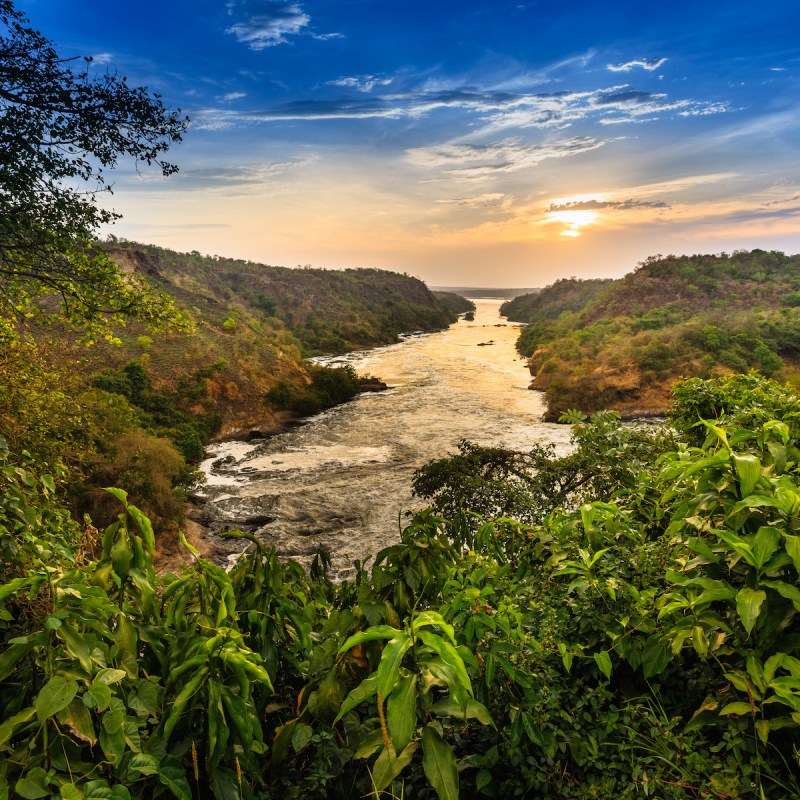
I’ve recently come back from Uganda, and no, I was not gorilla trekking — unlike 90 percent of international visitors that come to experience this east-central African country. Why did I not do what Uganda is most famous for, just like its neighbor Rwanda? On one hand, I was time-poor, and on the other hand, I am not particularly interested in trekking through the jungle. I get bitten by everything and hate humidity. I was honestly more interested in seeing what the country had to offer for those not traipsing through gorilla country.
Videos by TravelAwaits
And, you know what? I talked to others who had done the trekking and loved it, but they had not seen the places I had searched out. But everybody was happy with their choices, agreeing that Uganda has a lot to offer travelers with various interests and things on their wish list.
So, here, I have listed my personal reasons why Uganda is a great country to visit. If you are doing the trekking, then maybe you can add a few days to enjoy these as well as the gorillas.

1. The Great Lake Victoria
The world’s second largest freshwater lake, after Lake Superior in North America, Lake Victoria is also Africa’s largest freshwater lake. The 26,600-square-mile lake borders Uganda — which has the largest share of its waters — Tanzania, and Kenya. It contains roughly 1,000 islands. To me, staying right by the lake was one of the top reasons for coming to Uganda, as it is a land-locked country. But the lake gives a feeling of being by the sea, at times moody, other times just calmly stretching to the horizon. Sadly, it is not advisable to jump in because of numerous parasites living in the water that can cause some nasty diseases. Still, I stayed at the Protea Marriott in Entebbe, right on the coast where you can sit by the pool and watch the lake, and the bird life was incredible.

2. Amazing Bird Watching
The birds bring me straight to the next reason to visit Uganda. There are some 1,066 bird species recorded as of May 2020, and from the hotel pool alone, I spotted kingfishers, brown kites, herons, cormorants, pelicans, egrets, and more. Gigantic marabou storks live nearby and one came to the pool to have a drink. We were practically on eye-level with each other, it was so tall.
Uganda is a haven for twitchers — bird watchers from around the world — with Uganda’s birds representing more than 50 percent of Africa’s total bird list and 10 percent of the world’s bird species. I am not a focussed twitcher, but I really wanted to see the shoebill bird — a stork with an enormous beak “common” in Uganda — but alas, it eluded me.
Instead, around Lake Mburo, I spotted African fish eagles, pretty spotted Guinea fowl, malachite kingfishers, hamerkop, and many more. And while I might sound knowledgeable, I am not. I simply looked at the birds the ranger pointed out to me. But I was surrounded by Italian and Finnish twitchers who were all terribly excited.

3. The Source Of The Nile
After having encountered the Nile previously in Cairo, and then again on a Nile cruise between Luxor and Aswan, I was keen to see where the longest river in the world had its humble beginnings. But there is nothing humble about it. The city of Jinja, some 50 miles east of Kampala, lies at the very beginning of the Nile and pinpoints exactly where Lake Victoria ends and where the Nile officially begins.
The majority of the water in the Nile, some 70 percent, comes from the lake. The rest of it is made up of natural springs that bubble up where the Nile begins its 4,132-mile-long journey to the Mediterranean. Apparently, it takes the water 3 months to complete the journey between Lake Victoria and the Mediterranean. Taking a boat trip to the very beginning of this mighty river is quite humbling.

4. The Climate
Dare I admit it? My first reason for looking at traveling to Uganda was the climate. It is tropical with temperatures around the mid-70s Fahrenheit, so much better than the 118-degree heat in Qatar where I live at the moment. And even though traveling in mid-August — at the end of the high season for travel and the beginning of the rainy season — the weather was gorgeous throughout.
It was cool for me, a bit humid, yes, but no rain at all. The tropical climate offers two rainy seasons per year, with the best times for visiting generally between December and February (the hottest season), and June and August. While temperatures can peak in the 90s, Uganda generally experiences little fluctuation, perfect for those of us who can’t abide too much heat.

5. The Rolex
By a rickety stall alongside a dusty road to Jinja, I tasted my first Rolex — a traditional breakfast found everywhere in Uganda. Basically, it’s a flat omelet rolled into a chapati, an Indian flatbread. The Rolex stands for “rolled eggs” and is simple, tasty, and easy to eat on the go. It’s my favorite breakfast for sure. Another typically Ugandan breakfast, for which you will need to sit down, is katogo — a plate full of rice, posho (a sticky dumpling-like side made from ground maize), or cornmeal, eggplant, plantain, and some meat. You need to be very hungry for this.
But it is not all about breakfast in Uganda. They also prepare some seriously good fish, especially around Lake Victoria, the great lakes of Uganda, and the Nile. Fish dishes you can find include tilapia and Nile perch — both very nice white fish usually served with salad or vegetables, posho, or Irish (what they call potatoes locally).

6. Hippos And Crocs
One of the main reasons I wanted to go to Uganda, apart from the weather and Lake Victoria, were the hippos. While I have seen the “Big Five” across Kenya, Senegal, and South Africa before, I had never seen hippos. I was beyond excited to spot not just one far away in the distance, as I had expected, but countless hippos young and old in Lake Mburo. They were very close to the shore and visible on a boat trip around the lake, with their little ears twitching as they watched me as much as I watched them.
There were also huge crocodiles on the lake’s beaches, big enough to — according to the wildlife guide — eat baby hippos. The main reason for the Lake Mburo tour is the abundant bird life, for most visitors, but for me it was the hippos. It was a dream come true.
7. Equator Hopping
If you read TravelAwaits regularly, you might already know that I love visiting destinations and locations where you can be in two places at once. Standing with one foot in the northern hemisphere (where it is summer) and the other in the southern hemisphere (where it is winter) — even if you don’t notice the difference — is pretty fun.
I had previously crossed the equator by plane when I was on the way to Mombasa in Kenya. The pilot made the plane swerve, announcing that we had just crossed the equator, much to the delight of everybody. I had crossed by car, but never on foot, so this was a good reason to goof around and hop from one hemisphere to the other.
